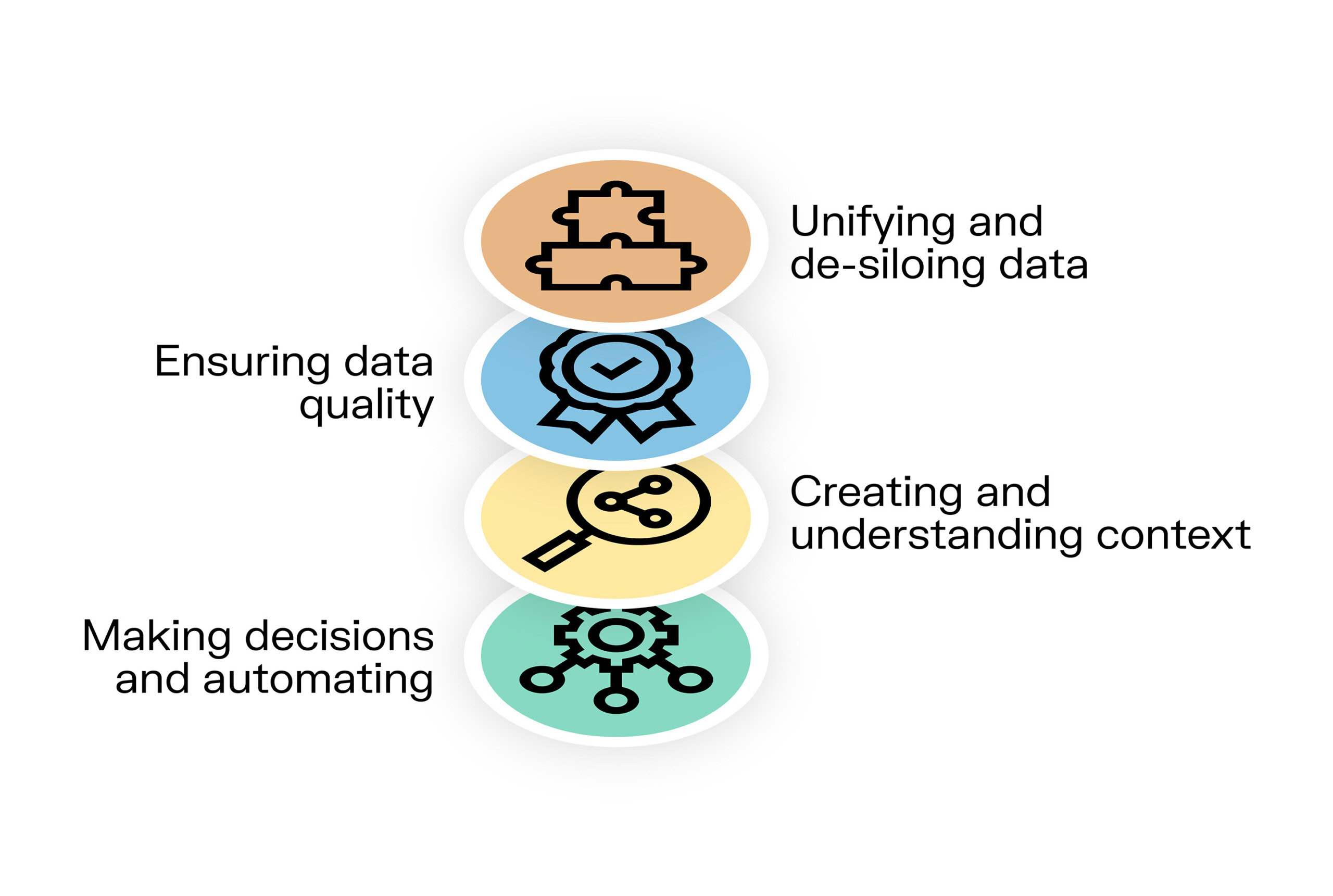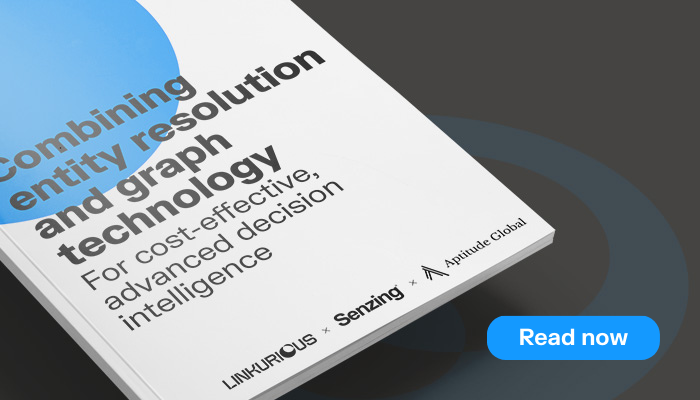As a decision maker, you have to find methods to make the most informed choices for your organization on a daily basis, making the most of often large quantities of data to fuel those decisions. Business Intelligence (BI) has played a role in helping decision makers analyze their past data to fuel strategies going forward. But BI lacks predictive capabilities.
This is where Decision Intelligence (DI) comes in. By incorporating AI models and predictive analytics, decision intelligence empowers decision makers to automate certain actions and access future-looking recommendations. DI builds on the capabilities of BI and takes it further, helping leaders navigate the complexities of today’s business environment.
Let’s take a deeper look at the differences between business intelligence and decision intelligence.
Business intelligence (BI) tools gather, process, and present data to help organizations make sense of their business data.
Typical BI solutions work with subsets or samples of an organization's overall data, rather than ingesting and analyzing all available data. The insights they provide are retrospective, showing what has happened historically based on past data.
While BI dashboards can offer powerful analysis, they are limited to delivering static insights and cannot incorporate real-time data.
The role of BI is to present information in a digestible way, but it still requires human decision makers to interpret the data and synthesize insights from multiple reports or sources. BI tools themselves do not make predictions, offer recommendations, or automate any part of the decision-making process. Any actions taken based on BI insights still require human intervention and judgment calls. While valuable for understanding past performance, BI models provide a relatively basic layer of organizational intelligence without true decision automation capabilities.
While business intelligence tools offer important data insights, these solutions come with inherent limitations that restrict their ability to inform decisions at scale.
A key constraint of BI tools is their reliance on historical data without robust predictive analytics. By only analyzing past data, BI tools cannot generate accurate projections or foresight about future scenarios. The insights are retrospective, leaving it up to decision makers to independently synthesize conclusions and hypothesize about forthcoming trends or events. BI tools do not provide automated suggestions, recommendations, or decisional guidance.
Another limiting factor is the static nature of BI reporting. Most BI dashboards rely on snapshots of data captured at set intervals, rather than offering a continuous stream of information. This time lag prevents BI from delivering true real-time intelligence that could power agile, responsive decision making as situations unfold. The insights are necessarily out-of-date to some degree.
Decision intelligence (DI) builds on the foundation of business intelligence but takes analysis several steps further. In contrast to BI's descriptive and diagnostic capabilities, DI offers advanced predictive and prescriptive analytics powered by artificial intelligence and machine learning.
While BI works with subsets of data, decision intelligence platforms integrate and analyze all available information and context to uncover key drivers, patterns, anomalies, and granular segments that may not be easily visible. By leveraging AI prediction tools, DI can then make tailored recommendations to guide decisions rather than just presenting static data visualizations.
Another key differentiator is that decision intelligence insights and recommendations are highly dynamic. They can incorporate real-time data streams and generate forward-looking predictions, reducing the time-to-insight and accelerating critical decision making. BI, being backward-looking, cannot offer this same agility.
Decision intelligence ultimately enables two complementary modes of decision making that BI alone cannot provide. First, it augments human intelligence by surfacing predictive insights that allow people to make faster, more confident decisions. Second, DI can also fully automate routine operational decisions based on the analytical models and decision frameworks it builds.
While business intelligence focuses on after-the-fact reporting, decision intelligence combines descriptive, predictive, and prescriptive capabilities in a cohesive way, going beyond just surfacing data to actively informing and automating organizational decisions.

Decision intelligence offers several key benefits over traditional business intelligence approaches that can drive significant value for organizations:
By automating data synthesis and analysis, decision intelligence saves decision makers from spending hours or days manually combing through reports and dashboards. DI platforms do the heavy lifting of integrating all relevant data sources and surfacing key insights, recommendations, and predicted outcomes. This frees up valuable time and brainpower.
Decision intelligence leaves no stone unturned by analyzing the full breadth of data across an organization rather than being limited to sampled subsets. It breaks down data silos and overcomes the risk of skewed or inaccurate analysis from fragmented information. Even low signals and seemingly disparate data points can be connected through advanced analytical techniques like graph analytics and AI models.
The ability to rapidly analyze scenarios, simulate potential outcomes, and receive tailored prescriptive recommendations allows organizations to make more informed decisions that mitigate risks. Decision intelligence provides the foresight to identify potential issues or opportunities earlier.
Many large organizations require thousands or millions of operational decisions daily. Decision intelligence platforms provide the scale to apply data-driven reasoning and decision models consistently across an enterprise.

Choosing the right tools for decision intelligence requires some forethought and understanding. Our recent white paper, published alongside Aptitude Global, a specialist data solutions provider, and Senzing, a leading software company providing entity resolution technology, dives into some of the challenges that come with de-siloing your data to manage risks and make more informed decisions. It also explores the question of how to choose between a commercial off the shelf solution and a modular technology solution.
